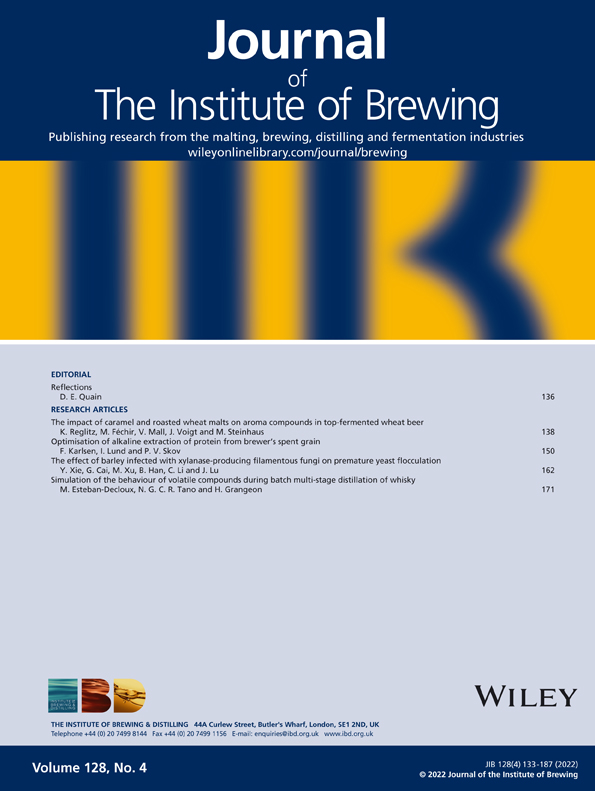REDUCTION OF HIGHER ALCOHOLS BY FERMENTATION WITH A LEUCINE-AUXOTROPHIC MUTANT OF WINE YEAST
Abstract
Several auxotrophic mutants requiring branched chain amino acids (valine, leucine, or isoleucine) were isolated in a strain of Montrachet wine yeast. They were tested for their ability to produce lowered amounts of higher alcohols (‘fusel oil’: isobutyl, active amyl, and isoamyl alcohols) in grape juice fermentations. One strain which required leucine was especially good in this respect. This mutation is recessive and is the result of a deficiency for the enzyme α-isopropylamate dehydratase. In trial fermentations with this mutant, the resulting wines contained up to 20% less total fusel oil and 50% less isoamyl alcohol compared to the parent Montrachet strain. An experienced taste panel did not discern any gross degradation of taste quality in wine made with the mutant strain compared to that made with the parent strain. The mutant strain could be of commercial importance in preparation of distilling material for alcoholic beverages since the reduced fusel oil content would not require any special distillation procedures which are normally used to avoid the unpleasant flavour associated with concentrated higher alcohols. Reduction of the isoamyl alcohol content is particularly significant since this fusel oil component is usually present in the highest amount.




